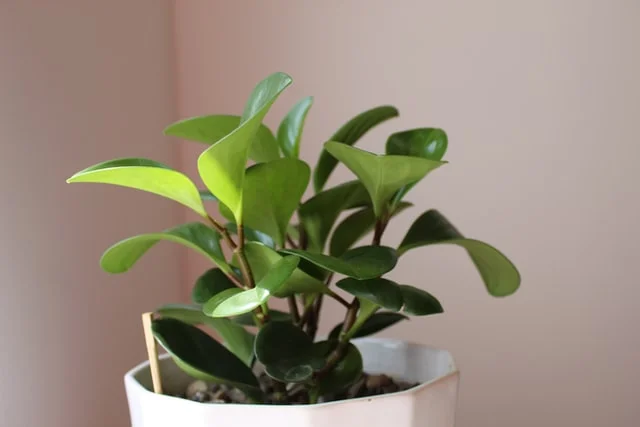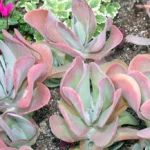Table of Contents
How to Care for Peperomia Serpens
Peperomia Serpens plants are considered succulents because of the thick and slightly succulent leaves. This plant prefers more humidity and water compared to most succulents.
Peperomia Serpens plants are native to the rainforests of South America, West Indies and Mexico.
This plant can grow to heights of between six and twelve inches in height and a width of between six and twelve inches.
Peperomia Serpens is a fleshy species of evergreen plant and this plant is available in a wide range of shapes. The structure of this plant consists of neatly layered foliage, and this makes the plant look lively and full bodied.
What Does Your Peperomia Serpens Require?
Light Requirements
Peperomia Serpens plant will do better in areas where it gets a medium to bright level of light, as this will help the plant to maintain the vibrant foliage colours. Morning sunlight and filtered light are the best types of light for this kind of plant.
These plants will do well in artificial light when they have between twelve and sixteen hours. When this plant does not have enough light, it will result in dull coloration, droopy leaves, and a reduced amount of leaves.
Avoid putting the plant in an area with direct sunlight as it can cause the leaves to burn.
Temperature Requirements
Peperomia Serpens is a tropical plant, and therefore it prefers to be in temperatures between fourteen and twenty-five degrees centigrade. Avoid putting the plant in areas where it will be subjected to open vents or opening doors.
As this is a tropical plant it will not do well when it is subjected to cold temperatures.
Soil Requirements
Peperomia Serpens in nature will grow as epiphytes and it often settles in the nook of a tree.
The roots of the plant will form into the slightly decaying bark on the tree. A key to getting a thriving plant is to choose a soil close to the natural habitat, therefore this plant will do better in loose, chunky, and acidic soils.
A potting medium designed for orchids will do well for this plant. However, it is able to do well in a regular potting soil when mixed with vermiculite or peat moss.
Humidity Requirements
Peperomi Serpens are tropical plants, and therefore prefer to be in environments with a high level of humidity, especially during the main growth period. During the summer months, allow the plant to have some time outdoors in the sun, but avoid direct sunlight.
If it is not possible to sit the plant outside, fill a tray with pebbles and water as this will increase the level of humidity or use a small humidifier.
How to Water Peperomia Serpens
This plant does not need to have water on a regular basis. The surface of the soil should be left to dry between waterings. It is best to keep the soil of the Peperomi Serpens dry as too much water will lead to fungus problems and root rot.
Peperomia Serpens is a hardy plant and can survive even when it is not constantly watered. It is a good idea to water your Peperomi Serpens at least once a week.
How to Fertilise Peperomia Serpens
When it comes to fertiliser for Peperomia Serpens, it is best to give the plant less fertiliser rather than more. Dropping or discoloured leaves are an indication of a shortage of light, too much water or lack of nutrition.
These plants are a slow growing epiphyte species, which can go most of its life without any supplementary fertiliser, as it will get everything that it needs from the planting soil.
Growth Rate of Peperomia Serpens
Peperomia Serpens makes an ideal plant to have in a house due to its size, as it is a small species of plant. It is rare for these plants to grow to heights more than two feet. Within the first season, this plant will start to sprout, and the leaves will develop.
Extra Tips for Peperomia Serpens
Pests and Diseases
These plants can be affected by the usual pests and diseases of indoor plants. The pests that can affect these plants includes spider mites, whitefly, and mealybugs.
When you find that your plants are affected by these pests, the best way to treat the problem is to use an insecticidal soap and wipe the plant.
Other problems that may affect these plants are leaf spots and root rot when the plants are too moist.
Pruning
When pruning these plants, there is no need to be delicate as they are hardy plants despite looking delicate and compact. Prune these plants back so that they retain their ornamental shape.
Check the plant regularly and remove any dead vegetation and any leaves that show signs of disease or damage. It is best to detect and deal with any foliage problems early as this will reduce the amount of damage to the plant.
Repotting Peperomia Serpens
This plant does not need to be re-potted very often, and it will do better being in pots that are slightly on the small side. Keeping your plant in a small pot is unlikely to cause it any damage.
It is a good idea to repot the plant every couple of years as this will prevent the plant from becoming too compacted.
- Remove the plant gently from its existing pot.
- Carefully separate the roots from the potting mix.
- Transfer the plant carefully to the new pot and add the remainder of the potting mix.
- Gently firm the potting mix around the plant roots, however, do not make it too compact.
- Give the plant a thorough watering to encourage the plant to settle into the new pot.
Propagation
Peperomia Serpen plants have a succulent and thick nature to the plant. therefore, the easiest propagate is from cuttings.
- Remove a leaf from the adult plant along with an inch of stem.
- Put the cutting cut end down into a small container which is filled with a suitable potting soil.
- Cover the new plant and pot with a plastic wrap or use a cloche, as this will create a greenhouse effect and help to retain moisture.
- Water the new plant regularly and avoid letting the soil dry out.
- Roots should start to form within a couple of weeks. At this point the cutting can be moved to a larger pot.
FAQ
Is Peperomia a Good Indoor Plant?
Peperomia is a great choice for people that are looking for a houseplant for beginners. This plant is very hardy and forgiving if slightly neglected.
The attractive foliage on this plant means that it makes great houseplants.
Does Peperomia Grow Fast?
All species of Peperomia plants are slow growing and they can be planted at any time of the year. These plants are hardy and are do not require much care.
Is Peperomia a Low Light Plant?
Peperomia plants can survive in low light, but they are not specific low light plants. As these plants can survive in low light, they are perfect for keeping in shader parts of the house and greenery can help to brighten a darker indoor area.
Can Peperomia plants be grown in Fluorescent lighting?
Peperomia plants can be grown under fluorescent light as these are a hardy type of plant and they can be very forgiving if the conditions are not perfect.
Do Peperomia Like to Be Misted?
Peperomia Serpen like to be misted and it is a good idea to mist the leaves occasionally using a spray bottle during the spring and summer months.
The mist spray should be lukewarm water as this will help to increase the level of humidity.
There are some species of Peperomia such as Peperomia Albovittata that do not like to be misted and it can lead to fungus growing on the plant.
Does Peperomia Plant Purify Air?
Peperomia plant can purify the air, as it can remove harmful particles and toxins such as formaldehyde. When you feel that you need to clean the air in your home, then it’s a good idea to get a Peperomia plant.
Why Are My Peperomia Leaves Falling Off?
There are a couple of things that can cause leaves to fall from Peperomia and these are a deficiency of calcium and overwatering.
Overwatering is one of the biggest problems for these plants. A deficiency of calcium and overwatering can cause the leaves to curl.
What to Do with an Overwatered Peperomia Serpens?
If you happen to overwater your Peperomia Serpen plant, then place the plant into a shaded area and remove any wilting or dead leaves. Make sure that the pot has the ability to correctly drain off the excess water.
In some of the more serious cases of overwatering, it may be necessary to repot the plant.
Do Peperomia Serpens Belong to Succulent Family?
Peperomia Serpens are not part of the succulent family, although they do share similar characteristics. The similarities are that the leaves are tough and thick. Another similarity between the two is that they do not require daily watering.
Peperomia Serpens plants are able to withstand a higher level of humidity compared to succulent species.
Photo by Alda González-Cuevas on Unsplash



